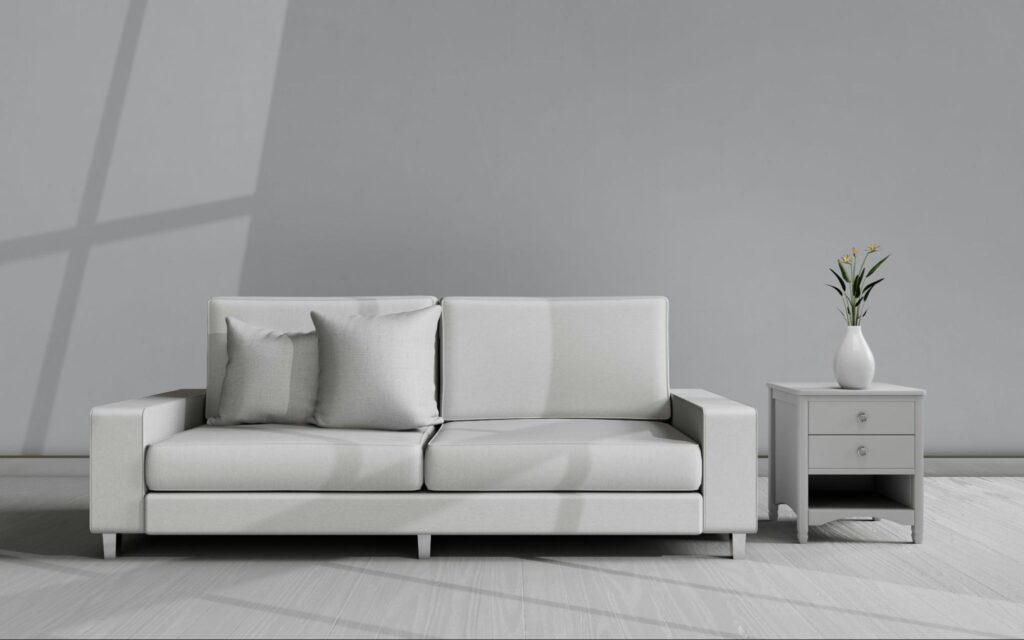Imagine transforming your study space with a piece of furniture that melds style, comfort, and functionality. A smart sofa can revolutionize your study environment, offering a space-efficient, comfortable, and tech-friendly seating option. Unlike traditional seating, a smart sofa comes equipped with features like built-in chargers, adjustable seating positions, and memory foam cushions tailored to enhance your productivity.
You could finally say goodbye to cluttered desks and tangled cords. Picture a sleek, modern sofa where you can plug in your devices without hunting for outlets. Not only does it add a touch of sophistication to your study, but it makes your daily routine smoother and more efficient.
Who wouldn’t want a more comfortable and tech-savvy study space? A smart sofa might just be the stylish upgrade your home office has been missing. Give yourself the gift of comfort and practicality, and watch how it positively impacts your study habits.
Maximizing Your Study Space With a Smart Sofa
A smart sofa can transform your study space by combining comfort with functionality and enabling efficient use of space. Features such as built-in storage and ergonomic design make it an essential piece of furniture for any study room or home office.
The Intersection of Comfort and Functionality
A smart sofa is designed to offer enhanced comfort while serving multiple purposes. Imagine having a sofa that adjusts to your posture, reducing strain during long study sessions. Ergonomic support helps you stay focused and comfortable.
Well, you don’t have to imagine anymore, Yaheetech offers a smart sofa that can blend in with any sort of space and offer comfort and functionality. They are an environment-friendly brand with plenty of smart furniture for living rooms, study rooms and lounges. Their great quality of products is matched by their great customer support. Their smart sofa is the perfect fit for a study room because of its comfort, functionality and USB charging port. This means you can easily charge your devices without leaving your study space. This increases focus and comfort.
Study Room Furniture Essentials
Smart sofas often include storage solutions. Built-in compartments allow you to keep textbooks, papers, and other study materials within arm’s reach. This feature minimizes clutter and keeps your study area organized.
A versatile piece, the smart sofa can be the centerpiece of your study room decor. Opt for designs that match your existing furniture to create a cohesive look. Neutral colors like gray and beige work well in most settings, providing a professional yet comfortable vibe.

Smart Design Features for Enhanced Productivity
A smart sofa can transform your study space with practical features like built-in storage compartments and integrated technology.
Built-in Storage Solutions
Smart sofas often come with storage compartments that help keep your study area neat. These compartments can be hidden under seat cushions or integrated into the armrests. Having easy access to your essentials—like books, notebooks, or even snacks—eliminates the need to leave your study zone, letting you focus more on your tasks.
Organization is key to productivity. Built-in drawers and shelves can help you categorize your items efficiently. Some smart sofas even offer customizable storage units, allowing you to arrange them according to your study needs.
Integrated Technology for Study Efficiency
Modern smart sofas often include USB ports and wireless charging spots, so your devices stay powered without cluttering your space with cables. Having charging options literally at your fingertips means you won’t waste time searching for outlets.
Many smart sofas also feature integrated speakers and controls for lights or temperature. This lets you create the perfect study environment without getting up. Some models even come with software that can link to your home automation systems, helping you streamline your study sessions.

Choosing the Right Material and Style
Picking the ideal material and style for your smart sofa is key to making it fit seamlessly with your study space. Think about durability, comfort, and how it blends with the room’s decor.
Materials That Merge Durability with Comfort
Your smart sofa’s material should offer both sturdiness and a cozy feel. Leather is a classic choice—it’s durable and gives off a sleek look. If you prefer something softer, consider microfiber. It’s not only comfy but also resistant to stains, making it perfect for daily use. Cotton or linen blends can provide a breathable, natural texture while still being fairly durable.
For a more eco-friendly option, look at recycled polyester or blended fabrics. These materials are often treated to be both robust and comfortable. Don’t forget about the practical aspects like easy-to-clean surfaces, especially if your smart sofa includes features like massage or adjustable posture settings.
A Style That Complements Your Study Room
The style of your smart sofa should enhance the overall aesthetics of your study. For a modern, minimal look, a sofa with clean lines and a solid color can create a sleek, unobtrusive presence. A rustic style can add warmth and charm, especially if your study has wooden elements.
Consider sofas with detachable covers in various colors or patterns. This lets you easily change up the look without buying a whole new piece. If your study room has vibrant decor, something simple and understated for the sofa might work best to balance out the visual appeal.
Matching the sofa’s style with your study’s existing furniture is crucial. For a cohesive look, choose colors and textures that complement—rather than clash with—your study room’s theme.

Creative Ideas for Small and Multipurpose Spaces
Optimizing your study space is essential, especially if you’re dealing with limited square footage or a multi-use room. By incorporating clever sofa designs and personal DIY touches, you can enhance functionality and style without sacrificing comfort.
Space-Saving Sofa Designs
The newest sofa launched by Yaheetech is a great addition for space-saving in a small study room. During the day, it serves as a comfy seat for reading or working. At night, it can transform into a bed if you need an extra room for guests. And you know what, it also comes with USB charging port, so you don’t have to make excuses to leave your study space to charge your phone or laptop.
Consider a sofa with built-in storage. These come with compartments under the seat where you can store books, office supplies, or even blankets. It’s a smart way to keep your study area organized and clutter-free.
Another option is a wall-mounted sofa. When not in use, it folds up against the wall, freeing up floor space. This is ideal for tiny rooms or studio apartments where every inch counts.
DIY Customizations for Your Study Room
Personalizing your convertible sofa with DIY slipcovers can add a touch of uniqueness. Choose fabrics that match your study room’s color scheme, or mix and match patterns for a quirky vibe.
Build your own armrest organizers using simple tools and materials. These handy pockets can hold stationery, remote controls, or your phone, keeping essentials within reach while you work or relax.
Installing adjustable lighting around your sofa can enhance your study space. Use LED strips or small wall-mounted lamps to provide ample light for reading and working during the evening.
Incorporating a few decorative pillows can make your smart sofa not only more comfortable but also more visually appealing. Choose designs that reflect your personal taste and contribute to a cozy, inviting study atmosphere.
Published By: Aize Perez


















